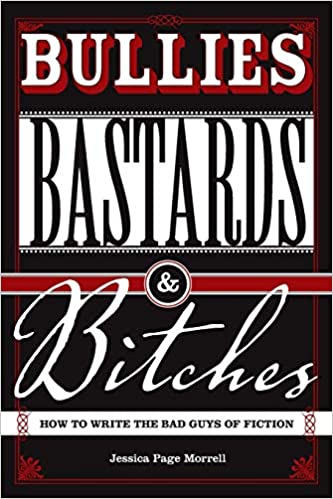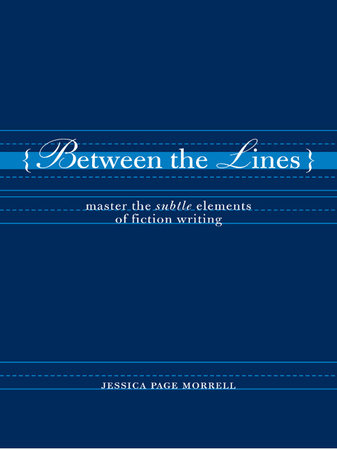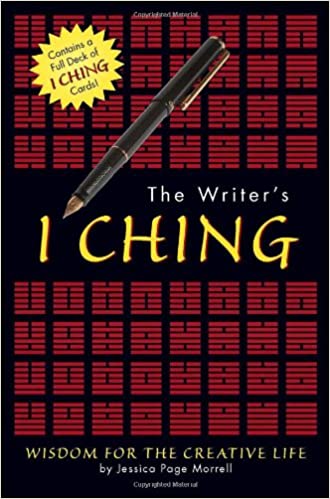Jessica P. Morrell©
“Writing is a highly complex act that demands the analysis and synthesis of many levels of thinking.” ~Donald Graves
When I’m editing a manuscript I can separate it in one of two categories: the projects that feel like I’m reading a coherent, publishable story and the ones that feel like I’m reading a raw or flimsy manuscript. The first category of manuscripts is a pleasure to work on; the second type requires a lot of stamina and analysis. Since writing is designed for the theater of the mind, I want to suggest ways to make your manuscript unfold in the reader’s imagination with both vivacity and plausibility. Everything we write needs to link to something within our readers. All storytelling is about illuminating and enriching the every day and sometimes bypassing life as we know it into the fantastical. I want to talk about story characteristics that are often unheralded and invisible.
 It’s impossible to write fiction or memoir without understanding its underpinnings such as conflict, scene structure, and character development. Without this understanding you might write page after page, but you likely will not create a comprehensible story; instead you’ll produce an aggregation of words or a jumble of scenes loosely clustered around ephemeral characters. And because a novel or memoir is the sum of many parts, learning how these parts work together, how to connect the dots between them is indispensible.
It’s impossible to write fiction or memoir without understanding its underpinnings such as conflict, scene structure, and character development. Without this understanding you might write page after page, but you likely will not create a comprehensible story; instead you’ll produce an aggregation of words or a jumble of scenes loosely clustered around ephemeral characters. And because a novel or memoir is the sum of many parts, learning how these parts work together, how to connect the dots between them is indispensible.
Good writing is easy to follow—it’s coherent, unified, and has an internal logic that guides readers seamlessly through sentences and scenes to a rewarding conclusion. This means that there are powerful links throughout. It means that on each page the story appears to have been written by one person, at one time. And in the end, the reader comprehends the order, viewpoint, and logic of what has been written.
Unity means that your story cannot read like it was created by a committee or critique group, but instead crafted by a single author with a singular vision and focused design. Just as in a symphony or any musical composition, each note is designed to create a profound, overall effect. An effective story has a single, unified purpose, mood and voice that sweep the reader toward an inevitable resolution. Along the way, the writer uses many devices and techniques such as description and action, all working together.
You can identify unity in other types of art. In a pop or country song for example, you’ll notice its unity by a repeated refrain, chorus or chords. In a film unity is enhanced by the editing choices and the overall look and sound of the film. Sometimes the longer a writer labors over a manuscript the less unified it becomes. This happens because writing novel-length projects requires making constant decisions as you go along. And sometimes these decisions result in a sort of hodgepodge of a story. Thus you will need to edit for unity in your final revision.
It’s important to remember what readers expect and want from us. Every work of fiction or memoir should possess an emotional feel, an overall tone you want readers to experience. Now, while tone will vary throughout the story, the general feel may be steamy, or swashbuckling or creepy, or hide-under-the-bed scary. You may want lyrical, romantic, dark, or mysterious. Tone unifies.
A story that is unified does not contain needless digressions, extraneous characters and unnecessary scenes. It all leads to an inevitable conclusion amid a profound sense of reality. For example, in a unified story, each character’s sojourn in the plot matches his or her importance to the storyline. A secondary character may have a significant story but you don’t have as much space to develop it, so you choose what to include and make it fit the confines of the overall story.
Unified storytelling also has an internal logic that glues it together—the impression that things make sense, that the storyline is credible. Actions in the story and character’s motivations operate by reason, there is a causal relation between actions, and there are reactions and consequences for actions. This internal logic coupled with a sequence of events lead the characters from their stance and attitudes at the beginning of the story through complications and trouble until the story problem is finally solved. The sequence or the order in which things unfold also makes sense.
Once the story problem is established, a writer might rearrange the order of events. But all must be presented with a nod to symmetry, logic, and story archetypes. Perhaps the story is based on something sacrificed for something gained, love conquering fear, or justice being served. Or your story is about a quest for glory, the hunted and the hunter, or a tragic confluence such as in House of Sand and Fog. In this story an Iranian immigrant, striving for a foothold in America, buys the family home from a young woman on a downward skid. It’s the American Dream gone horribly awry.
Logic demands that the storyline focuses on the most significant events in the protagonist’s life. Even the most magical and extraordinary occurrences can seem reasonable in a story as long as the author provides concrete details which prove their significance. Logic also demands that the story events bring the protagonist’s internal conflict to the surface. With internal conflict as part of the mix, then individual scenes will take on greater force because the internal conflict must also be resolved.
 Flow is also part of unity—a sense of a seamless unfolding or how the ideas, themes, scenes are all connected so that the reader isn’t jarred or confused while visiting your story world. Flow always reminds me of rivers. Flow also occurs on the sentence level. It’s noticed when a story is read out loud and the reader doesn’t trip over or omit words on the page. Each sentence builds on the ideas in the last, and each paragraph has clear links to the preceding one. The reader doesn’t need to strain to follow the writer’s train of thought, or the style doesn’t get in the way of the content.
Flow is also part of unity—a sense of a seamless unfolding or how the ideas, themes, scenes are all connected so that the reader isn’t jarred or confused while visiting your story world. Flow always reminds me of rivers. Flow also occurs on the sentence level. It’s noticed when a story is read out loud and the reader doesn’t trip over or omit words on the page. Each sentence builds on the ideas in the last, and each paragraph has clear links to the preceding one. The reader doesn’t need to strain to follow the writer’s train of thought, or the style doesn’t get in the way of the content.
Elegant writing isn’t easy or effortless. Revising for flow, coherence, and unity takes attention to detail, because flow can fail at any of the many joints in a piece of writing—between the sentences, at the boundaries of the paragraphs, or between scenes and chapters. Focusing on these areas as you revise can make your writing more unified.
Last month I started explaining the components of unity and flow in writing. So let’s return to the topic about how to knit words and ideas together to create a cohesive whole. Cohesiveness is one of the invisible aspects of writing that keep the reader engaged in the story. Readers don’t want to reread sentences or scratch their heads when they feel lost or confused. Word usage and techniques that create continuity and unity affect what a reader absorbs and remembers.
Writing logical, powerhouse sentences and paragraphs involves editing and revising with different mindsets in different cycles. First edit for content (information, inclusion, and structure), and second for mechanics (logical progression of thought, parallelism, active voice, and grammar). Each sentence builds on the ideas in the last, and each paragraph has clear links to the preceding one. The results are that readers don’t strain to follow the writer’s train of thought or actions in a scene. The writing doesn’t get in the way of the content. In fiction or memoir, the scenes and events follow an orderly or understandable sequence.
Without voice all the elements of writing won’t work. There needs to be a strong, identifiable, authentic voice binding it together. Voice is that magical, intangible element in stories that agents and editors are always looking for. Without it you’ve merely collected words on a page. A potent, authentic voice separates good stories from mediocre ones. When you add voice, a personality, outlook, and sensibility are introduced. The writing breathes. Voice is personality on the page and creates trust in the reader.
Voice will affect your word choice, sentence and story structure, even your punctuation. Voice rules. Voice will include persona, style, tone, word choice, and sentence length. In fiction the voice can range widely when in the hands of Daniel Handler (Lemony Snicket) Diana Gabaldon, Charles Dickens, Eudora Welty, Mark Twain, J.K. Rowling, Dennis Lehane or Jane Austen. Likewise, in nonfiction the variety is endless in tales told by Tobias Wolfe, Jeannette Wells, Mary Carr, Frank McCourt, or Truman Capote. A voice, through tone, reveals the attitude of the writer or character, or mood of a piece. This means a voice can be snarky or sincere, colloquial or highfaluting, wise or wisecracking, coy or honest. Voice tells the reader who is writing or telling the story and why and what she/he thinks of the topic.
Voice is intimately connected to viewpoint—the lens through which the story is focused. Point of view is one of the most basic elements when writing fiction. If you get it wrong, the story flounders. One of the problems I see most often in manuscripts is inconsistency and shifting point of view. It can also happen in nonfiction when a writer starts imagining what another person thinks. Viewpoint mistakes and shifts disorient the reader and garble and muddle the story. It’s vital that readers can identify, then come to trust the thoughts, emotions, and voice of the viewpoint character or narrator.
Most elements of the story contribute to the theme, which in turn creates unity. A theme is the controlling idea or central insight and deepens the reader’s experience, yet it lurks beneath the plot. It is implied, not preached. Thus, a reader extracts this meaning, often not conscious of doing so. Theme helps weave the story together while commenting on society or human nature. Common themes are greed, abandonment (the Harry Potter novels), redemption, selflessness, survival, hope (The Road).
 Along with themes, motifs are a recurring element in a work of art — music, fiction, plays, as well as in architecture. A motif is evocative and usually symbolic—carrying meaning beyond it’s literal one. Motifs haunt readers and can add layers of meaning to stories. In music and architecture, motifs often serve solely to lend a pleasing effect. But in storytelling, this type of repetition and emphasis is tied to themes. A motif tends to take on certain associations from the particular situations in which it emerges. In Lord of the Rings, the ring is the central motif reflecting the fight between good and evil. Tolkien also uses light and dark to portray good and evil. In The Secret Life of Bees the bees and hives as well as a religious statue are central motifs. In Romeo and Juliet the stars shed light on their love.
Along with themes, motifs are a recurring element in a work of art — music, fiction, plays, as well as in architecture. A motif is evocative and usually symbolic—carrying meaning beyond it’s literal one. Motifs haunt readers and can add layers of meaning to stories. In music and architecture, motifs often serve solely to lend a pleasing effect. But in storytelling, this type of repetition and emphasis is tied to themes. A motif tends to take on certain associations from the particular situations in which it emerges. In Lord of the Rings, the ring is the central motif reflecting the fight between good and evil. Tolkien also uses light and dark to portray good and evil. In The Secret Life of Bees the bees and hives as well as a religious statue are central motifs. In Romeo and Juliet the stars shed light on their love.
Symbols use a concrete object to convey abstract meanings. Symbols often forge meanings in a story while adding subtle threads that connect. Colors, nature, and natural cycles are probably the most used symbols such as the dawn symbolizing a beginning. Often in stories or films a shared meal symbolizes communion, children symbolize innocence. In The Adventures of Huckleberry Finn the Mississippi River symbolizes freedom. In the film American Beauty, red roses, rose petals, the color red are used throughout. They symbolize passion, sexuality, and life force. In an opening scene Annette Benning, unhappy and repressed, is cutting the roses.
Like other writing devices, flow is a nearly invisible factor, but when it’s employed, your writing will be seamless and smooth and graceful. But without flow your writing happens in fits and jerks, it flounders on the page, topics isolated like ice floes in a vast sea.
 An essential technique that creates flow is transitions and often writers neglect to use them. Transitions are the words, phrases, sentences or paragraphs used to bridge what has been said with what is going to be said. They’re the connector words and phrases that keep readers knowing where they’ve been and where they’re going.
An essential technique that creates flow is transitions and often writers neglect to use them. Transitions are the words, phrases, sentences or paragraphs used to bridge what has been said with what is going to be said. They’re the connector words and phrases that keep readers knowing where they’ve been and where they’re going.
Simple transitions are generally, but not always, a subordinate clause placed in the beginning of a sentence or paragraph and used as a road sign indicating a change. Probably the most famous transition in writing is “meanwhile, back at the ranch.” It provides a shorthand note and the reader knows, Ah, we’ve changed locales; we’re at the ranch again. Wonder how Ellie is getting along since Jed has been on the cattle drive for three months now.
Transitions are handy devices because they can accomplish so much in only a few words. Their jobs are to signal: a change in time, a change in place, a shift in mood or tone, or a shift in point of view. Transitions also clarify relationships, emphasize, contrast or compare things, conclude actions or thoughts, and create associations. Often the best transitions are short, clear and unobtrusive. They are especially helpful when the story or topic changes direction or emotion.
 Flow is consciously applied as a courtesy to the reader because readers deeply resent being lost of confused when amidst a page or story. Readers also hate to be jolted or feel a sense of disorientation or bewilderment. Flow provides the map, flow connects the dots, flow grants readers firm footing. Flow aids the internal logic needed to make your ideas comprehensible. Flow will move the reader from sentence to sentence, paragraph to paragraph, idea to idea, scene to scene, and chapter to chapter with grace and ease.
Flow is consciously applied as a courtesy to the reader because readers deeply resent being lost of confused when amidst a page or story. Readers also hate to be jolted or feel a sense of disorientation or bewilderment. Flow provides the map, flow connects the dots, flow grants readers firm footing. Flow aids the internal logic needed to make your ideas comprehensible. Flow will move the reader from sentence to sentence, paragraph to paragraph, idea to idea, scene to scene, and chapter to chapter with grace and ease.
This article is the copyrighted property of Jessica Morrell. Distribution or reuse only with permission of the author.





You really get to the point! This is a wonderfully concise and yet thorough resource, Jessica. I’m going to bookmark it to re-read each time I start another writing project or revision. 🙂
Carol,
Thanks kindly.
Flow is so important….
Sometimes I see manuscripts that a writer has slaved over for years and they sort of feel like a patchwork quilt by the end. This happens because too many changes have been made without going back and fixing/adjusting for flow.
Happy writing to you, Jessica
Excellent post and just in time for a new project.
Thanks for reading Ed.
Hope the writing is going well.
Jessica
Voice will affect your word choice, sentence and story structure, even your punctuation. Voice rules. Voice will include persona, style, tone, word choice, and sentence length. In fiction the voice can range widely when in the hands of Daniel Handler (Lemony Snicket) Diana Gabaldon, Charles Dickens, Eudora Welty, Mark Twain, J.K. Rowling, Dennis Lehane or Jane Austen. Likewise, in nonfiction the variety is endless in tales told by Tobias Wolfe, Jeannette Wells, Mary Carr, Frank McCourt, or Truman Capote. A voice, through tone, reveals the attitude of the writer or character, or mood of a piece. This means a voice can be snarky or sincere, colloquial or highfaluting, wise or wisecracking, coy or honest. Voice tells the reader who is writing or telling the story and why and what she/he thinks of the topic.